
|
|
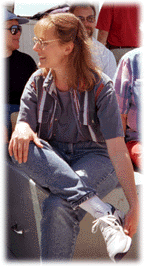 Dr. Stephanie Shipp was the lead PI for TEA. She completed her doctoral degree in the Department of Geology and Geophysics at Rice University
in
Houston, Texas.. The topic of her thesis (and of continued interest) is the recent deglacial history of Ross Sea, Antarctica. This may explain the
excessive length of the GLACIER Web pages covering that subject. During her years with the TEA Program, Stephanie was at Rice University and the
American Museum of Natural History. Stephanie was the primary director of the program and its web site. She also worked with the Antarctic research PIs
to ensure positive field experiences for both teachers and researchers. In 2003, Stephanie took on the position of Manager of Education and Public
Outreach at the Lunar Planetary Institute. shipp@lpi.usra.edu
Dr. Stephanie Shipp was the lead PI for TEA. She completed her doctoral degree in the Department of Geology and Geophysics at Rice University
in
Houston, Texas.. The topic of her thesis (and of continued interest) is the recent deglacial history of Ross Sea, Antarctica. This may explain the
excessive length of the GLACIER Web pages covering that subject. During her years with the TEA Program, Stephanie was at Rice University and the
American Museum of Natural History. Stephanie was the primary director of the program and its web site. She also worked with the Antarctic research PIs
to ensure positive field experiences for both teachers and researchers. In 2003, Stephanie took on the position of Manager of Education and Public
Outreach at the Lunar Planetary Institute. shipp@lpi.usra.edu
|
 Ms. Arlyn Bruccoli served as the Project Manager and co-PI for the final two years of the TEA grant. Arlyn started with the TEA Program in 1999
as
project coordinator. While working on the TEA Program, Arlyn was at the American Museum of Natural History and served as a consultant on the project via
the Cold Regions Research and Engineering Lab and the University of Rhode Island. A meeting with Stephanie Shipp and Clarice Yentsch of TEA at the
American Museum of Natural History (AMNH), led Arlyn to the realm of teacher professional development. The immersion experience that is at the heart of
the TEA program appealed to Arlyn's museum education background. Arlyn came to AMNH to fulfill her internship requirement for the Master's in Museum
Education at Bank Street College of Education. During her internship she worked with Museum staff to co-author the Educator's Guide to the Hall of Asian
Peoples and with elementary school students in the Museum's After-school program. After her internship was completed Arlyn continued in the Museum's
Education department, where she worked part-time on TEA. Her work for the TEA Program grew to a full-time position with Museum and the Cold Regions
Research and Engineering Lab. Arlyn's work on TEA included assisting with the TEA Evaluation, led by Maritza Macdonald of the Museum, facilitating
Mentoring Resource Groups, collaborating with Marge Porter on TEA Program supports for assisting TEA parcticipants in meeting their responsibilities,
overseeing the TEA budget at multiple institutions, working with Steve Stevenoski to produce all the TEA Real Audio broadcasts, and organizing TEA
Program meetings. Arlyn completed her Master's degree in April 2001 when she submitted her thesis "Immersion in Science as Teacher Professional
Development: Case Studies of Two Parcticipants in the Teachers Experiencing Antarctica & the Arctic Program." arlynb@tops-tele.com, arlynb@amnh.org
Ms. Arlyn Bruccoli served as the Project Manager and co-PI for the final two years of the TEA grant. Arlyn started with the TEA Program in 1999
as
project coordinator. While working on the TEA Program, Arlyn was at the American Museum of Natural History and served as a consultant on the project via
the Cold Regions Research and Engineering Lab and the University of Rhode Island. A meeting with Stephanie Shipp and Clarice Yentsch of TEA at the
American Museum of Natural History (AMNH), led Arlyn to the realm of teacher professional development. The immersion experience that is at the heart of
the TEA program appealed to Arlyn's museum education background. Arlyn came to AMNH to fulfill her internship requirement for the Master's in Museum
Education at Bank Street College of Education. During her internship she worked with Museum staff to co-author the Educator's Guide to the Hall of Asian
Peoples and with elementary school students in the Museum's After-school program. After her internship was completed Arlyn continued in the Museum's
Education department, where she worked part-time on TEA. Her work for the TEA Program grew to a full-time position with Museum and the Cold Regions
Research and Engineering Lab. Arlyn's work on TEA included assisting with the TEA Evaluation, led by Maritza Macdonald of the Museum, facilitating
Mentoring Resource Groups, collaborating with Marge Porter on TEA Program supports for assisting TEA parcticipants in meeting their responsibilities,
overseeing the TEA budget at multiple institutions, working with Steve Stevenoski to produce all the TEA Real Audio broadcasts, and organizing TEA
Program meetings. Arlyn completed her Master's degree in April 2001 when she submitted her thesis "Immersion in Science as Teacher Professional
Development: Case Studies of Two Parcticipants in the Teachers Experiencing Antarctica & the Arctic Program." arlynb@tops-tele.com, arlynb@amnh.org
|
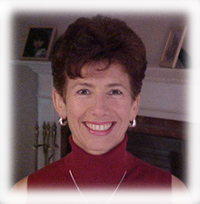 Ms. Marjorie Porter served as co-PI on the TEA Program for the final three and half years of the TEA grant. Marge drew upon her experiences as a
public
school science teacher in Connecticut and as a TEA parcticipant to facilitate the transfer of teacher field experiences into classroom practice. She
performed this work as consultant to the American Museum of Natural History and the University of Rhode Island. marjorieporter@sbcglobal.net
Ms. Marjorie Porter served as co-PI on the TEA Program for the final three and half years of the TEA grant. Marge drew upon her experiences as a
public
school science teacher in Connecticut and as a TEA parcticipant to facilitate the transfer of teacher field experiences into classroom practice. She
performed this work as consultant to the American Museum of Natural History and the University of Rhode Island. marjorieporter@sbcglobal.net
Marge states: I have been a high school teacher in Northeastern Connecticut for 23 years. At various times during those two decades I have taught biology, environmental science, and freshman science. My most rewarding teaching experiences have resulted from working with small groups of students on various research projects or in programs that have had a research focus. Those experiences have included projects funded by Connecticutıs Long Island Sound Fund and parcticipation in NOAAıs Aquanaut Program. In 1994 I was selected to be a TEA parcticipant and I was paired with Dr. Martin Jeffries from The University of Alaska in Fairbanks. We worked in the Ross and Amundsen Seas aboard the icebreaker Nathaniel B. Palmer studying the development and structure of Antarctic sea ice. I have tried to replicate some of this research with my students by growing ice under different conditions and by observing the corresponding effects on its crystalline structure. More recently, I have completed thirty credits toward a second masterıs degree with a concentration in Environmental Education. The highlight of my graduate work has been my work on Alaskan lakes, again with Dr. Jeffries. I have traveled to the frozen north five times since 1999 in order to assist Martin in his research of lake ice growth and the flow of heat from the water to the atmosphere during the course of the winter. The snow depth, temperature, and density data have been used in order to estimate the conductive heat flux through the snow cover. This most recent project has provided a valuable opportunity to test the performance of a scientific model. It has also given me (and other teachers and students) the chance to learn first-hand about scientific research through parcticipation in data acquisition and analysis and the comparison of real and simulated data.
When I am not studying frozen water or working on the computer, I enjoy being in the great outdoors here in southern New England.
|
|
Dr. Debra Meese served as co-PI on TEA for five years. Deb was the programmatic contact at CRREL which handled the majority of the parcticipant
side of
the Program. She also worked with the Arctic research PIs to ensure positive field experiences for both teachers and researchers.
dmeese@crrel.usace.army.mil
|
 Dr. Clarice Yentsch served as co-PI on TEA from 1999 to 2002. Clarice's extensive experience with scientific research and education were
invaluable to
the project. She is currently the Curator of Education with the Mel Fisher Museum.
Dr. Clarice Yentsch served as co-PI on TEA from 1999 to 2002. Clarice's extensive experience with scientific research and education were
invaluable to
the project. She is currently the Curator of Education with the Mel Fisher Museum.
Clarice Yentsch is an oceanographer/educator
who serves as a mentor for the TEA program, offering words of wisdom and
loads of patience.
Clarice is affiliated with the Education Development Center (EDC), the American
Museum of Natural History, and Bigelow
Laboratory for Ocean Sciences in West Boothbay Harbor, Maine. On route to the
South Pole, she was derailed in Key West, bought a place there -- and seems
to be stuck between 24 and 44 degrees North latitude. She is affectionately
known as the "itinerant bag lady" toting around her laptop office
and lab. Clarice is committed to students as scientists. She is a firm believer
that research is the best teaching tool and that students can make valuable
contributions to science as well as scientists can make valuable contributions
to education of students and teachers. Almost any day she can be found in,
on or under the water along with her husband Charlie, also an oceanographer,
and/or her two sons Colin and Carlton, both fisherman of lobsters, bluefin
tuna and sea urchins. Ice studies begin about 5:00 pm daily. Please join
us! |
|
Ms. Susan James served as the Project Assistant for the final year the program was facilitated by the American Museum of Natural History. Susan
has been
affiliated with AMNH since 1992. During this time she worked in two different departments (with several different titles and promotions along the way)
and was involved in the creation of what is
now called the Central Reservations Department. She has worked with
teachers and students over the years and felt very fortunate to join the fabulous TEA family. Susan noted that she was inspired by the diverse
experiences of TEA teachers. Prior to her work with AMNH, Susan attended Samuel J. Tilden H.S. in Brooklyn. After graduation she pursued an interest in
graphic arts and advertising, where she attended New York City Technical college(also in Brooklyn) majoring in Art and Advertising Design.
|
Webmeisters
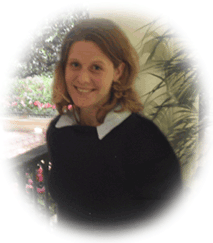 April Metz has been working with museum education since 1996. She spent 5 years designing exhibitions and children's interactives for The Colonial Williasmburg Foundation, before she moved to Houston, Texas. After a brief season at the Children's Museum of Houston as a project manager, she now works as a freelance designer for Rice University. Projects in 2002 have included event design & coordination for an international geological conference, costumes for the Children's Museum of Houston and small business web design. Working on TEA has been the best thing that has happened to her in Houston, besides, of course, meeting Dr. Stephanie Shipp!
April Metz has been working with museum education since 1996. She spent 5 years designing exhibitions and children's interactives for The Colonial Williasmburg Foundation, before she moved to Houston, Texas. After a brief season at the Children's Museum of Houston as a project manager, she now works as a freelance designer for Rice University. Projects in 2002 have included event design & coordination for an international geological conference, costumes for the Children's Museum of Houston and small business web design. Working on TEA has been the best thing that has happened to her in Houston, besides, of course, meeting Dr. Stephanie Shipp! 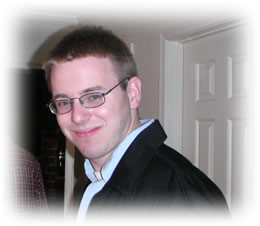 Rob McDonald started on the TEA project in 2002 as the website's
administrator
and programmer. After growing up in the wholesome city of New Orleans, Rob eventually made his way to Houston to study Computer Science at Rice
University.
Projected to graduate in 2007, he is spending a semester studying at the University of Science and Technology in Hong Kong and working summers at NASA.
When not hacking away at his computer, Rob enjoys playing football and eating sushi. EOLRRF.
Rob McDonald started on the TEA project in 2002 as the website's
administrator
and programmer. After growing up in the wholesome city of New Orleans, Rob eventually made his way to Houston to study Computer Science at Rice
University.
Projected to graduate in 2007, he is spending a semester studying at the University of Science and Technology in Hong Kong and working summers at NASA.
When not hacking away at his computer, Rob enjoys playing football and eating sushi. EOLRRF.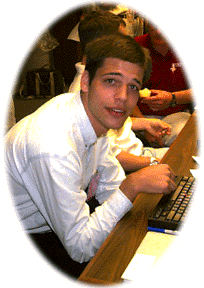 I'm Sam
Carter a Mechanical Engineering student at Jones College.
I've been bumming around California this summer because that is actually
where I originated. In working at NASA, I discovered that I really do
like engineering and (for now) computers will remain a hobby. I like to
tinker with them in my copious free time, but I decided that debugging
lotso lines of code is pretty boring. So GLACIER is just perfect for me
(no huge coding projects, tons of tinkering). Back in the Real World, I
like to play sports (soccer, basketball, pole vaulting, volleyball, you
name it), go backpacking (ask me about the Muir Trail some day), and
travel. When I'm vegging out, I watch TV (X-Files, Comedy Central, MTV,
and Star Trek) and read some (sci fi, historical fiction, Michael
Chrichton & Tom Clancy stuff too).
I'm Sam
Carter a Mechanical Engineering student at Jones College.
I've been bumming around California this summer because that is actually
where I originated. In working at NASA, I discovered that I really do
like engineering and (for now) computers will remain a hobby. I like to
tinker with them in my copious free time, but I decided that debugging
lotso lines of code is pretty boring. So GLACIER is just perfect for me
(no huge coding projects, tons of tinkering). Back in the Real World, I
like to play sports (soccer, basketball, pole vaulting, volleyball, you
name it), go backpacking (ask me about the Muir Trail some day), and
travel. When I'm vegging out, I watch TV (X-Files, Comedy Central, MTV,
and Star Trek) and read some (sci fi, historical fiction, Michael
Chrichton & Tom Clancy stuff too).Office of Extraordinary Designs
Lisa Rosato is the founder and creative director of Rosato Design, a graphic design firm based in Houston. She also founded Studio Raze -the new media design firm that is responsible for creating the design and user experience vision for T.E.A. She oversees creative development for all Studio Raze projects. Rosato has directed major design projects for Glacier, Mitcham Industries, and SecureLogix Corporation during her tenure with Studio Raze. Other clients include American Greetings, Browning Ferris, Inc., Design for Industry, Inc., Education Development Center, Freeman Exhibit Company, Golden Books and Games, New Era Caps, and Symtronix Corporation. She is an alumnus of the Minneapolis College of Art and Design and SUNY, Buffalo where she also taught painting. In her spare time she makes a desperate attempt to co-parent, along with her husband Mark, their three attention starved boys: Zack, Gus, and Ben, ages twelve, nine, and two.
Those Who Have Gone On to Other Things
 Hi, I'm Mike
Hardy, and I've been working on GLACIER forever. I left Rice a year
back to work with Cambridge Technology
Partners, but have since moved to the Bay Area to be a part of the
Silicon Valley geekfest as a consultant with IT Solutions, Inc. I eat code for
breakfast, break the speed limit without fear of retribution, prove
complex algorithms without trying, and can easily beat anyone at their
choice of athletic competition. In my free time I read only non-fiction
books, theorize on the origins of differences between various religions,
run a hedge fund and throw better parties than all my friends. My favorite
color is blue. I have a great relationship with my mother, I remember to
take my vitamins, and I still sleep 8 hours a day.
Hi, I'm Mike
Hardy, and I've been working on GLACIER forever. I left Rice a year
back to work with Cambridge Technology
Partners, but have since moved to the Bay Area to be a part of the
Silicon Valley geekfest as a consultant with IT Solutions, Inc. I eat code for
breakfast, break the speed limit without fear of retribution, prove
complex algorithms without trying, and can easily beat anyone at their
choice of athletic competition. In my free time I read only non-fiction
books, theorize on the origins of differences between various religions,
run a hedge fund and throw better parties than all my friends. My favorite
color is blue. I have a great relationship with my mother, I remember to
take my vitamins, and I still sleep 8 hours a day.
Emily Olanoff
I began working at Glacier in March of 1998. I plan on graduating from Rice University in 2000 with a Mechanical Engineering degree (note from Steph: Don't plan on graduating Emily -- the site needs you -- a small sacrifice for the kids......). After that, I hope to work in Phoenix, Arizona (my hometown) or Southern California. I will be spending the summer before graduation in Germany working for a company that produces pistons. In my free time, I love to play and watch sports. My favorites are basketball, volleyball and football.
 Gunnar
Person"The Duke of Definition," successfully majored in geology and geophysics at Rice University. He has put many many hours into the GLACIER
glossary and often had pondered whether or not it could count toward graduate
credit....or perhaps be considered a thesis in itself?! Gunnar, a native
of Alaska and a true free-spirit, focuses on experiencing
all that life has to offer. His most recent activities involved salmon
fishing in Alaska (Gunnar also is known for some of the best salmon jerky
on the face of the globe), traveling across Africa, and stopping in at Rice
long enough to say hello and put in a few hours of html work.
Gunnar
Person"The Duke of Definition," successfully majored in geology and geophysics at Rice University. He has put many many hours into the GLACIER
glossary and often had pondered whether or not it could count toward graduate
credit....or perhaps be considered a thesis in itself?! Gunnar, a native
of Alaska and a true free-spirit, focuses on experiencing
all that life has to offer. His most recent activities involved salmon
fishing in Alaska (Gunnar also is known for some of the best salmon jerky
on the face of the globe), traveling across Africa, and stopping in at Rice
long enough to say hello and put in a few hours of html work.We also acknowledge the work of Adam Hawthorne, Katie McGowan and Ryan Price and greatly appreciate their contributions to the TEA web site.
